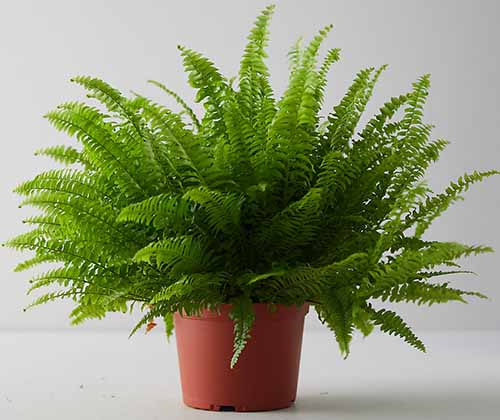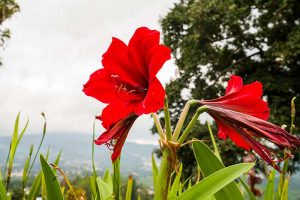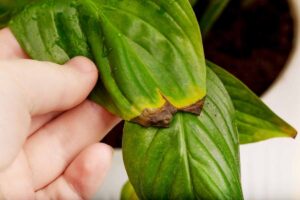Nephrolepis exaltata
The Boston fern, aka the sword fern or the Boston swordfern, is the poster child of the fern world. When the average person imagines this type of plant, chances are they conjure up images of this popular species.

We link to vendors to help you find relevant products. If you buy from one of our links, we may earn a commission.
And who can blame them? It’s a quick-growing option with feathery, blade-shaped fronds and an elegant arch to its growth habit.
This species can offer an instant upgrade to anyone’s home, adding an air of class and a touch of prehistoric interest anywhere it’s placed. What’s not to love?
Whether you’re a fern expert or a pteridophyte neophyte, this article will provide the necessary know-how to grow Boston ferns like a pro.
Buckle up, fern fans. Here’s what’s ahead:
What You’ll Learn
N. exaltata can be the gateway plant to a fern addiction, however. Many Jurassic Park-esque, frond-filled rooms got their start with the addition of a single Boston swordfern. Be warned.
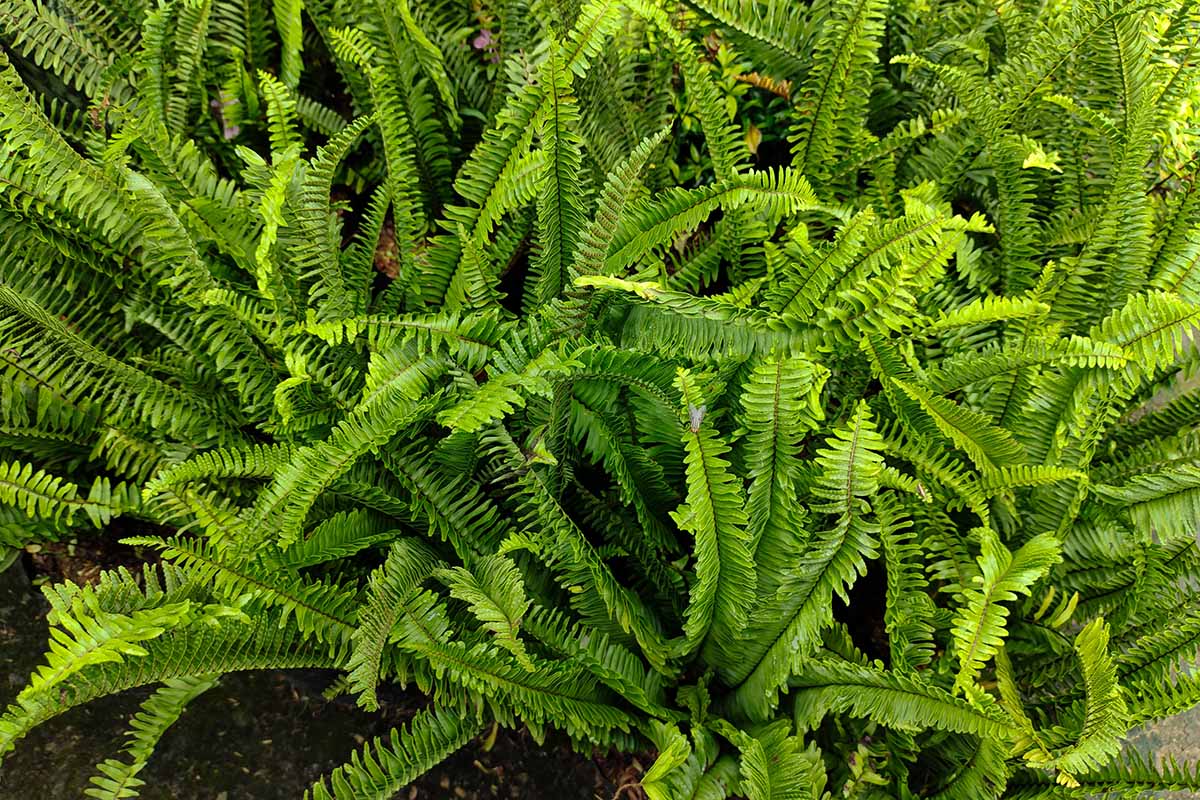
Just (half) joking, of course. Onward!
Cultivation and History
Despite its common name, the Boston fern actually hails from tropical and subtropical regions of the Americas, which explains its affinity for humid conditions.
This tightly clumped plant has a mature height and spread of two to three feet, with arching fronds tapering into points that give them a sword-like appearance.

This thirsty plant thrives in indirect light and dappled shade, which makes it ideal for planting on porches, under awnings, or in the shade of larger canopy/understory trees and shrubs.
It also tends to grow somewhat invasively, especially in warmer climates. Overall, a pretty easy plant to care for… when it’s grown outside in USDA Hardiness Zones 9 to 12.
More attentive care is required when grown indoors. Since N. exaltata lacks winter hardiness, bringing the plants in for the winter is a necessity, and many gardeners find that all theirs can do indoors is merely survive.
N. exaltata needs indirect light and humidity to thrive, and the often dark and dry conditions of wintertime homes can be rough on these plants if they don’t get some extra help.
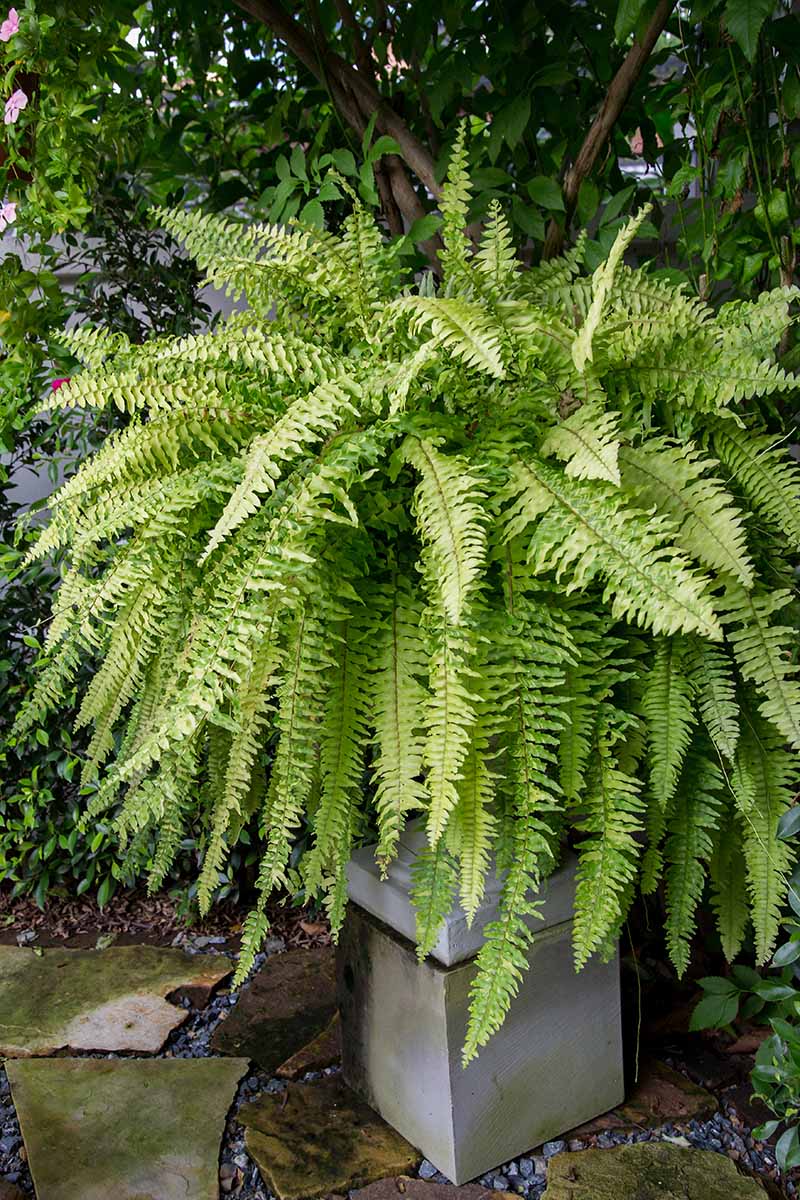
As for its origin story, this plant can trace its horticultural history back to its namesake: Boston.
The story of the Boston fern begins with F. C. Becker, a Victorian-era Massachusetts florist who received a specimen in a plant shipment from Philadelphia.
Becker noticed that one fern had a greater growing speed, frond width, and drooping habit in comparison to others in the shipment. As any plant nerd would do, he began to propagate it.
Two years later, in 1896, London botanists identified the variant and suggested that Becker bestow upon the plant its Boston moniker. The Boston fern soon exploded in industry popularity and success.
Why? Well, back in the Victorian era, ferns were a popular choice for display in parlors, i.e. the fancy front rooms found in upper-middle class homes used to receive guests.
The quick growth, wide fronds, and graceful droopiness of N. exaltata gave it an edge over the slow-growing, narrow-fronded, obstructively upright competition, and thus became the species of choice for use in these parlor rooms.
Boston Fern Propagation
True ferns don’t make seeds, as they reproduce via spores. Propagating spores can be a tricky endeavor, but since Boston ferns are sterile and produce non-viable or deformed spores, this is a nonissue.
You’ll need to propagate this plant via division or by layering runners instead.
Via Division
Divide N. exaltata when it outgrows its container or when the middle patches start to die. Sword ferns should be divided in late winter or early spring, ideally every few years in order to keep the plant robust and not root bound.
To divide, gently remove the plant from its container, then divide the root ball in half or quarters, depending on size.
Try to keep as many leaves as possible intact while doing so, and be sure to loosen and pull apart the roots a bit so they can establish themselves readily into the new soil.
Transplant into appropriately sized containers. Avoid pots and hanging baskets that are too big, to prevent excessively wet soil, and containers that are too small, so you won’t have to repot right away.
Keep the medium moist via misting for the first few weeks of growth. After that you can transition to a standard watering can.
From Runners/Stolons
Propagation can also be done via layering. Simply take a runner (still attached to the mother fern) and affix it into a nearby patch of soil or potting medium in a separate container.
After a few weeks of keeping it moist, once the affixed runner takes root, the new daughter plant can be detached from its parent plant and transplanted wherever you desire.
Transplanting
If you end up buying a Boston fern from a nursery or garden center, you’ll eventually need a container larger than the pot that it came in, in order to repot it as it grows.
Be sure to fill the container with a well-draining medium consisting of equal parts peat moss, sand, and garden or potting soil.
Since sword ferns prefer a pH of 5.0 to 5.5, add a teaspoon of lime per quart of potting mixture as well, in order to keep the peat moss from making the soil too acidic. You’ll then want to dig out space for your sword fern in its new container.
Pinch the bottom of the original container as you gently pull out the fern by the base of its stems, working carefully to keep the plant intact. Break up the roots a bit, for an easier transition.
Place in the prepared container, and backfill any empty spaces. Water in the plant, making sure to give it a good soaking at the soil line.
Learn more about propagating ferns here.
How to Grow Boston Ferns
Growing a Boston fern isn’t too tricky, especially when it’s grown outdoors, and we cover the details of this more thoroughly in a separate guide to outdoor care. (coming soon!)
N. exaltata loves well-drained, moisture-retaining soil such as a silt loam or a soilless peat and vermiculite mix.
This plant also loves water, so keep the soil moist – but not saturated – at all times. Placing the fern’s container in a second, larger container lined with damp sphagnum moss can help to maintain the necessary moist environment.
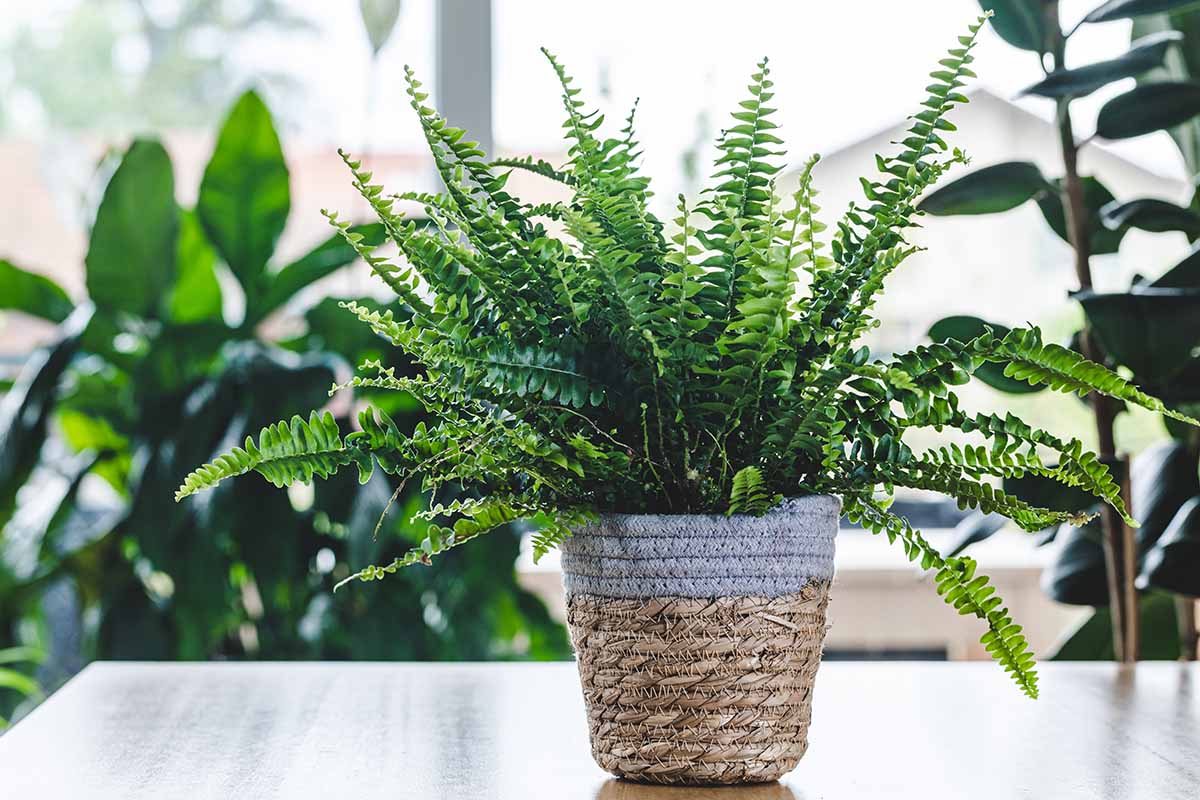
As a houseplant, the Boston fern does best when you give it indirect sunlight. If you’re limited to spots with bright light exposure, a sheer curtain helps in lowering light intensity.
Giving the pot a quarter turn every day or so can also help ensure even all-around growth.
N. exaltata thrives in containers that give it a bit of room to grow, and it does not like being root bound. But be sure to avoid overly large containers since the roots will suffer in large quantities of oversaturated potting medium.
This species thrives in the 60 to 80°F temperature range, but establishing a humid environment is of the utmost importance.
This can be done by placing your Boston ferns near kitchens or bathrooms, or setting containers on top of a tray filled with a bed of wet pebbles.
Sword ferns need less moisture in wintertime, so don’t water them as much in order to prevent root rot.
Growing Tips
- Choose an indoor location with indirect sunlight.
- A broad range of indoor temperatures are tolerated, so don’t stress over your thermostat too much.
- Be sure to provide moist conditions!
Maintenance
N. exaltata usually needs fertilization every month when actively growing, but be sure to cut back the frequency during winter dormancy.
This is especially important when growing this species indoors, as indoor plants don’t grow quite as fast as outdoor ones, and having an excess of fertilizer can easily kill a houseplant.
The ideal fertilizer is a balanced slow-release or liquid product used at half-strength doses, like this liquid indoor fertilizer from Easy Peasy.

It’s vailable in eight-ounce bottles via Amazon.
But be wary of over-fertilization – the ends of the fronds will brown and dry out as a result of using too much.
Feel free to remove any older dying or dead fronds as needed to keep the plant looking sharp. If fronds start to turn gray, increase watering. Increase light exposure if fronds become lanky and weak.
Be sure to divide your Boston ferns every couple of years as described above to keep them healthy and properly sized. In addition, repot your plants as they outgrow their containers and/or become root bound.
We cover the ins and outs of overwintering Boston ferns in our guide.
Boston Fern Cultivars to Select
This species is quite popular, and there are a variety of cultivars to choose from. Here are a few favorites:
Bostoniensis
The classic Boston fern, with all the traits you’ve grown to love.
You can find one of your own from Terrain, measuring about a foot in height and six inches in diameter – a real beaut!
Dallas
Also known as ‘Dallas Jewel,’ this is a rapid-spreading, smaller variety that tolerates lower amounts of light and humidity than your standard N. exaltata.
It’s the perfect houseplant for dark, dry homes.
Fluffy Ruffles
A cultivar with a densely growing clump of soft, “ruffled” fronds, ‘Fluffy Ruffles’ offers a visually textured interest that’s sure to amaze.
Rita’s Gold
Rita’s Gold™, aka ‘Aurea,’ is a compact variety with fronds colored a gorgeous chartreuse yellow.
Managing Pests and Disease
N. exaltata does well against herbivores – deer in particular – but it can be prone to some insect and disease issues, especially when grown outdoors.
Pests
Thankfully, no insect spells total disaster for a Boston fern owner armed with knowledge.
Mealybugs
Mealybugs appear as white, cotton-looking clumps on fronds, leaf axils, and roots. Mealybugs can lead to overall stunted growth and the eventual death of the infested plant parts.
To fix this issue, drench the soil with an insecticide such as this pyrethrin concentrate from PyGanic Gardening, available via Amazon in eight-ounce containers. Be sure to dilute the concentrate according to package directions.

PyGanic Gardening Botanical Insecticide
Ensure that the insecticide can eventually drain out of the pot via holes at the bottom.
Due to the sensitivity of the fronds, a gentle spray of water or organic insecticidal soap to the foliage will also help with insect control without damaging the greenery.
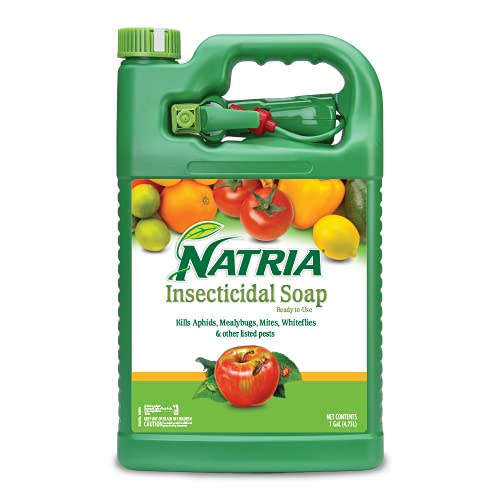
Natria offers a great product for this, and their insecticidal soap is available via Amazon.
Scale
It can be tough to tell where a scale insect ends and the Boston fern begins. Not as much of a problem when plants are grown indoors year-round, you may spot them if your potted plants spend the summer outside.
These brown, itty-bitty critters will often blend into the foliage, making it hard to detect their presence on the plant. When infested, plants become stunted, weakened, and can even start to die.
Control of scale is the same as control of mealybugs: apply an insecticide to the soil and allow it to drain, along with a tender spray of an appropriate but gentler product to control these pests, like the insecticidal soap mentioned above.
Learn more about dealing with scale in our guide.
Spider Mites
Spider mites are technically arachnids, not insects. But since they’re also creepy-crawlies that can wreak havoc on the Boston fern, I’ve decided to mention them alongside scale and mealybugs.

Spider mites are puny, and tough to see with the naked eye. Bust out a hand lens for a closer look and you’ll find the spider mites to be oval-bodied and covered in translucent bristles. Oftentimes, you’ll see their webs before you see the actual pests.
An application of organic insecticidal soap to the foliage will help with spider mite control. And these pests tend to prefer dry environments, so be sure to keep N. exaltata watered well, and in a humid location.
For all of the above pests, a comprehensive control approach can go a long way in keeping your plants healthy. Learn more by reading up on integrated pest management here.
Disease
As green thumbs, most of us instinctually freak out a bit when we see our plants afflicted with dark spots.
However, the dark spots on the undersides of the fronds are where the spores come from, so be sure you can tell the difference between said spores and actual symptoms of disease.

Unfortunately, N. exaltata is still susceptible to various types of disease. When it comes to the following ailments, an ounce of prevention is worth a pound of cure.
Pythium Root Rot
When infected with Pythium root rot, Boston fern can show many different symptoms, ranging from wilting and frond graying to necrosis or overall stunted growth.
Roots often lose their outer layers, leaving just a weak inner core behind that can’t uptake water and nutrients properly.
Starting with pathogen-free soil or medium is your best bet for preventing Pythium root rot, along with keeping the soil from becoming oversaturated. Chemical control is another way to combat this disease.
Rhizoctonia Aerial Blight
Keep a sharp lookout during the summer, as this is when Rhizoctonia aerial blight typically occurs.
This disease can come out of nowhere in less than a week’s time, forming irregularly-shaped, brown lesions anywhere on the foliage. Over time, the rapid spread of the lesions can coat the entire sword fern with a weblike, brown mycelium.
Control of Rhizoctonia aerial blight should occur via the same techniques used for Pythium root rot. To optimally control these diseases, both the foliage and the roots must receive treatment.
Best Uses for Boston Fern Plants
The Boston fern is ideal for use in hanging baskets, prominently displayed containers, or as accent plantings for other shade-loving plants. It’s a great indoor specimen for the attentive gardener who can take proper care of it.
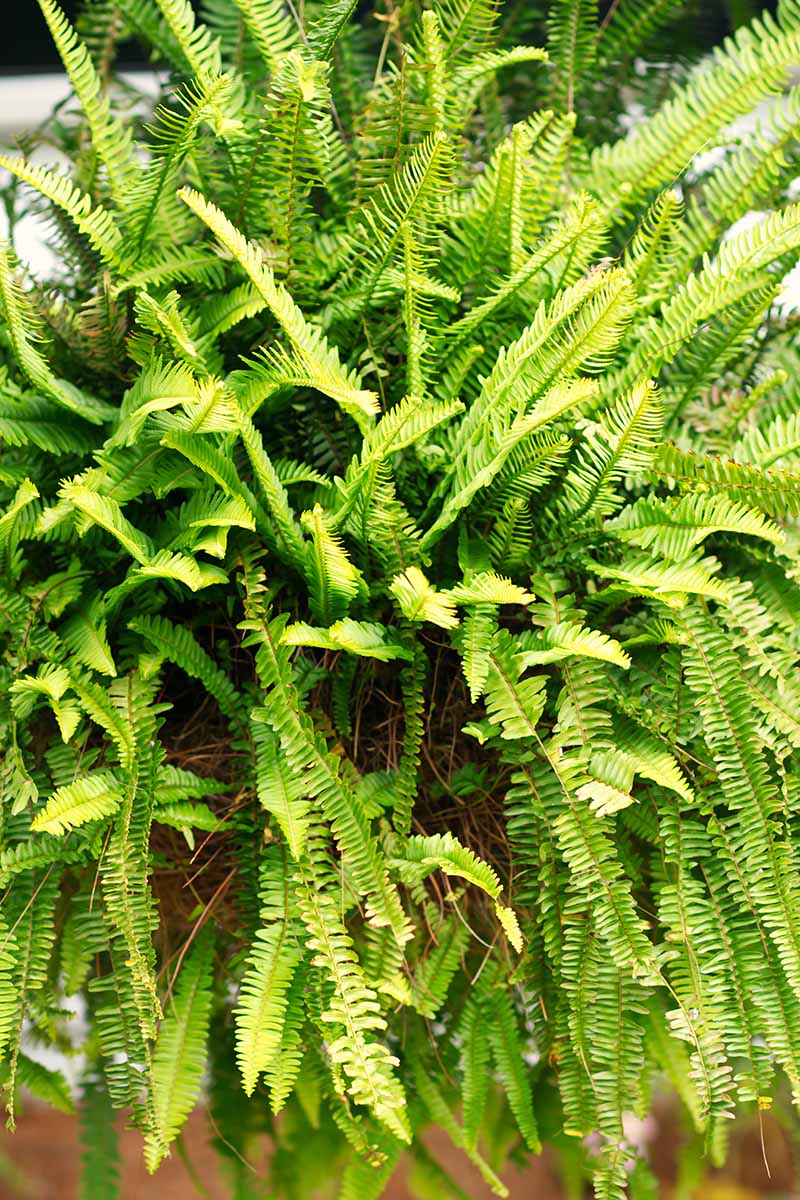
Being the versatile plants they are, sword ferns work well both as solo specimens and as companions to colorful tropical plants such as coleus, begonias, and impatiens.
Quick Reference Growing Guide
| Plant Type: | Herbaceous evergreen perennial | Maintenance | Low |
| Native to: | Tropical and subtropical regions of North, Central, and South America | Tolerance: | Heavy shade, deer |
| Hardiness (USDA Zone): | 9-12 | Soil Type: | Silt loam |
| Exposure: | Dappled or indirect sunlight to low light or heavy shade | Soil pH: | 5.0-5.5 |
| Time to Maturity: | 4-5 years | Soil Drainage: | Well-draining |
| Planting Depth: | 1-3 feet | Companion Planting: | Shade and moisture tolerant plants, colorful foliage and flowering plants like begonias and impatiens |
| Height: | 2-3 feet | Uses: | Accent plantings in shaded arrangements, houseplants, hanging baskets, containers |
| Spread: | 2-3 feet | Order: | Polypodiales |
| Growth Rate: | Moderate | Family: | Nephrolepidaceae |
| Water Needs: | High | Genus: | Nephrolepis |
| Common Pests and Diseases: | Mealybugs, scale, spider mites, Pythium root rot, Rhizoctonia aerial blight | Species: | Exaltata |
The Boston Fern: Your New Best Frond
In a hanging basket or in a container, out in the open or tucked away, the Boston fern will look absolutely stunning wherever you choose to show it off.
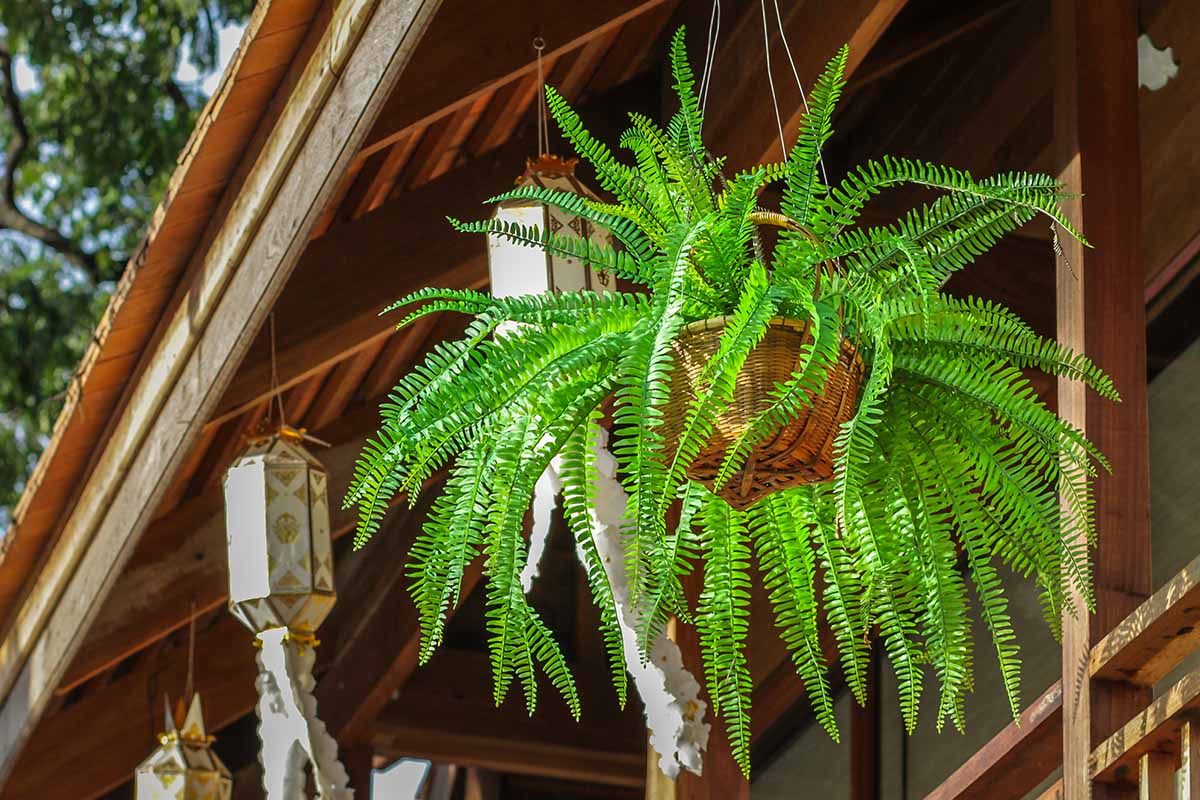
Experienced in the ways of growing this much-loved species? Still have more questions? Share your thoughts in the comments section below.
If you’re craving more knowledge on houseplants, treat yourself to these fascinating guides next:
